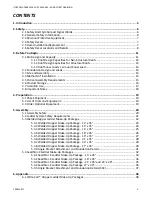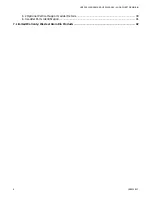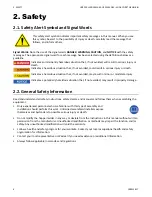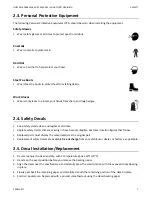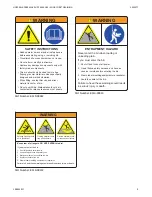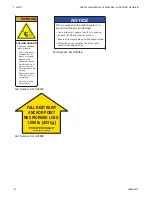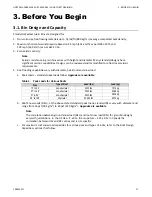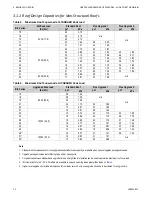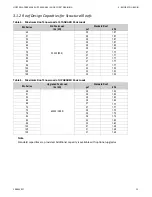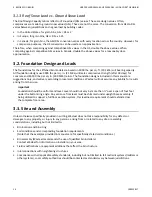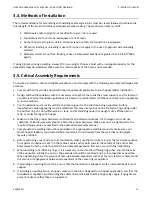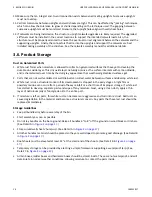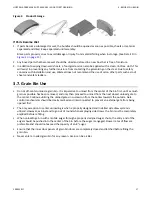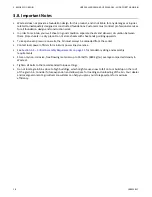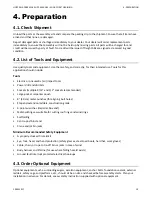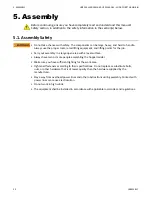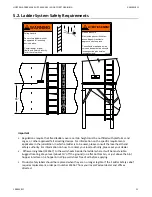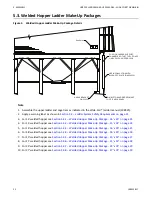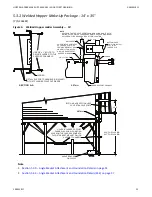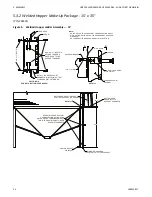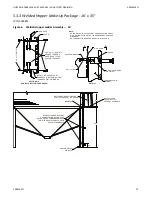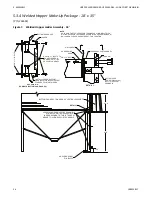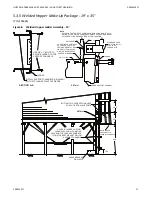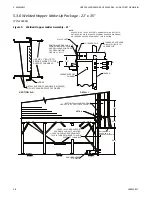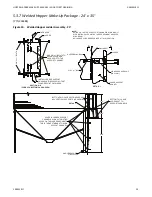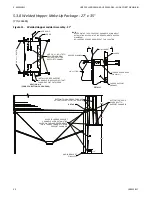
198935 R17
15
3.4. Methods of Installation
The recommendations for assembling and installing Westeel grain bins must be closely followed to achieve the
full strength of the bin and to achieve adequate weather sealing. The product warranty is void if:
1. Wall sheets and/or uprights not specified for a given tier are used.
2. Foundations are found to be inadequate or out-of-level.
3. Anchor bolts (cast-in-place, drill-in, chemical type or other) are found to be inadequate.
4. Off-center loading or unloading is used. (This does not apply to the use of approved side unloading
systems).
5. Materials stored are not free-flowing or have a compacted bulk density greater than 55 lbs/ft
3
(880
kg/m
3
).
If using bin jacks during assembly, always lift on an upright. Choose a hoist with an adequate capacity for the
expected empty bin deadload. Make sure the rated capacity of the hoist is not exceeded.
3.5. Critical Assembly Requirements
To ensure a successful, safe and reliable outcome you must comply with the following assembly techniques and
practices:
1. Comply with all local code and jurisdictional requirements applicable to your hopper ladder installation.
2. Design and build foundations with the necessary strength for the loads they must support, and for local soil
conditions. Westeel foundation guidelines are based on specific stated conditions and may not be applicable
to local conditions.
3. Your foundation must provide uniform and level support to the structure being supported. Surface
imperfections causing gapping must be remedied. This may involve, but not be limited to a) grouting under
the bottom ring of a non-stiffened bin or tank, and b) shimming under the uprights of a stiffened bin or
tank, or under the legs of a hopper.
4. Make sure that the proper hardware is utilized for all bolted connections. If a shortage occurs, do not
substitute. Take the necessary steps to obtain the proper hardware. Make sure nuts are tightened to the
required torque values as specified in the appropriate assembly manual.
5. Comply with all assembly instructions provided in the appropriate assembly manual to make sure your
whole hopper ladder is constructed safely. Important: Do not deviate from the wall sheet and upright
layouts provided.
6. Before anchoring your structure to its foundation, make sure the structure is round. The maximum variation
from perfect roundness is 3/4" on the radius. Locate anchor bolts toward the outside of the anchor bolt
holes (away from the circle) to permit the incremental expansion that can occur with the initial filling.
7. When installing roof stiffening rings, if it is necessary to shorten the stiffening ring tubes, shorten them as
little as possible. Initially the nuts on the expanders should be centered and as close together as possible.
When tightening, share the amount of take-up between expanders such that the nuts remain centered, and
the amount of engagement between all expanders on the same ring is equalized.
8. If extending an existing bin or tank, ensure that the foundation is adequate for the increased loads it must
support.
9. If installing an existing bin on a hopper, make sure the bin is designed for a hopper application, and that the
foundation is capable of withstanding the substantial point loads that the hopper legs apply. If uprights are
present, make sure that they are supported.
HOPPER LADDER MAKE-UP PACKAGES – WIDE-CORR® GRAIN BIN



